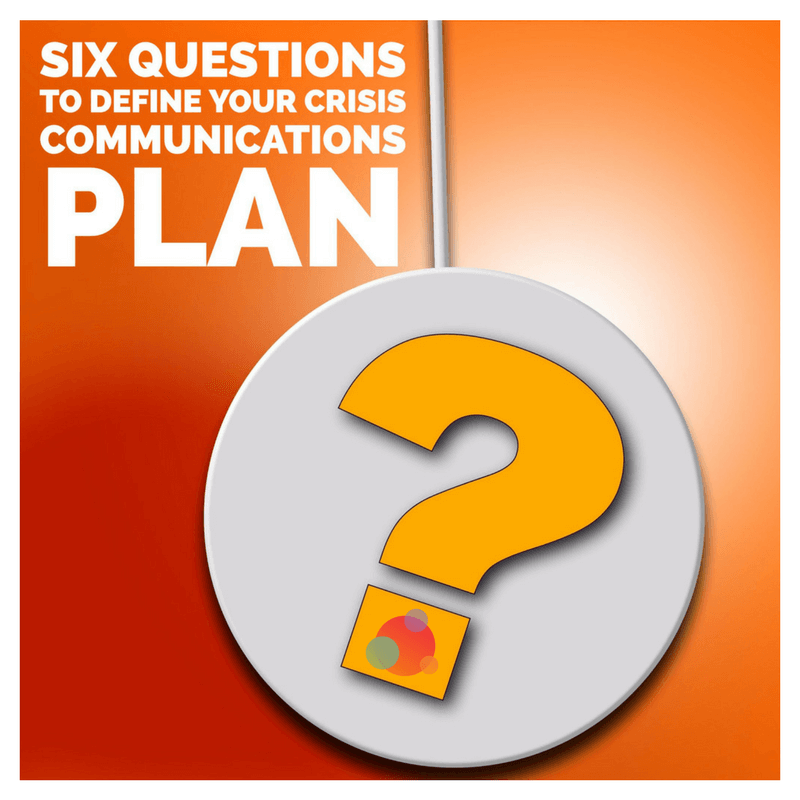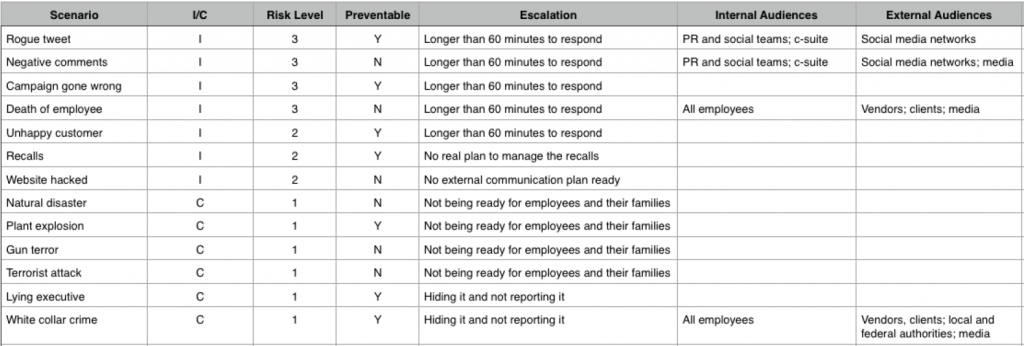
Here we are, at the end of our three-part series on using analytics in crisis communications planning.
Part one was on how to use Big Data to identify weaknesses, predict the future, and monitor current crises.
Part two was on the six ways to use social listening to help you prepare for the inevitable.
Last but not least, let’s talk about the power of keyword searches and media monitoring.
Every one of you should be using Google or Talkwalker to create alerts to keep you informed of media mentions that affect your brand.
Not only are they free, they are stupid simple.
Just go to either site, put in your search phrase, put in your email address, and voila!
You also should consider using:
- Mediatoolkit; or
- Buzzsumo.
You may think it’s overkill to use multiple services for monitoring, but I’ve found that each one tends to identify a slightly different selection of mentions.
For instance, Buzzsumo is really strong in blog mentions, many of which Google doesn’t catch.
Now that you have the right tools in place for crisis communications planning, let’s talk about preparation, which really pulls this all together.
Six Questions to Ask During Crisis Communications Planning
When we work with our clients in crisis communications planning, we walk through the following questions:
- What’s the worst thing that could happen?
- Is this scenario an issue or a crisis?
- How big is our risk?
- Can it be prevented?
- What would escalate it to a crisis?
- Who needs to know and when?
As you ask those questions, you build a risk matrix.
You can find a downloadable example of one below.
What’s the Worst that Could Happen?
This is where you brainstorm every possible worst case scenario that could happen to your organization.
This should capture everything from marketing campaigns that go off the rails (such as this Sea World campaign), to natural disasters and terrorist attacks.
Not all crisis has an external source either.
Prepare for things your executive team could do, such as poorly thought out social media posts, sexual harassment, or tax evasion.
Make sure to cast a broad net when sourcing your scenarios by including employees at varying levels from departments across your organization.
Is this an Issue or a Crisis?
An issue is a kerfuffle—it isn’t going to do damage to your company’s reputation or your bottom line.
Of course, with an issue, if you don’t deal with it quickly, it could morph into a crisis.
A crisis, in comparison, affects your company’s reputation and results in a significant loss of revenue.
A negative comment directed at your company on Facebook is an issue; your product exploding and being banned from being taken aboard aircraft by the FAA is a crisis.
How Big is Our Risk?
Not all crises demand all-hands-on-deck and sleeping in the office until they are resolved.
Rank your scenarios on a scale of one to three.
Three is low risk (but still important).
One involves setting up sleeping bags in the boardroom.
Can it Be Prevented?
You can’t prevent every unhappy customer or predict manufacturing issues that can cause a need for product recalls.
There are some things you can at least work towards preventing, such as an ill-conceived marketing campaign.
This requires better due diligence and more thorough crisis communications planning and training.
What Would Escalate it to a Crisis?
Sometimes a crisis may start off as a three, but rapidly escalate.
What are factors that could cause an escalation?
These could include:
- No response at all
- A canned response that is copied over and over again
- Lying—and lying some more
- Not saying two magical words—I’m sorry
- People hurt or killed
Who Needs to Know and When?
Although some people like to call a news conference whenever a thought enters their heads, not all crises merit a public mass communication.
If you receive a negative review on an industry review site, for instance, you should make your sales and customer service teams aware of it, and provide some talking points, but you don’t need to issue a news release refuting it point-by-point (over-defensive much?).
But if an executive is leaving the company to head up a rival firm, pretty much everyone needs to know.
This begins with your employees, board members, and investors.
Failure to get out in front of a story like this is a great example of how a crisis escalates.
While crisis communications planing won’t be able to account for every crisis, the process of planning , defining how you will respond, and who will be involved in which activities, goes a long way to helping you keep a cool head and react thoughtfully when the unexpected arises.
Example Risk Matrix
As you ask these questions during crisis communications planning, you can enter the information into the spreadsheet below.
You can see it puts answers to all six of the questions in a one-page, easy-to-understand document.
Three Final Things
Finally, if you take just three things from this three-part series, it should be what analytics can help you do in crisis communications planning:
- Identify weaknesses
- Look at past results to predict the future
- Monitor for current crises
With that, I have something nifty for you.
Some Goodies for You
We created an eBook out of it out of my Social Media Marketing World speech, which includes this three-part series.
There also are some templates, including the risk matrix, for you to steal.
If you’d like to receive those goodies, text SPINSUCKS (all one word, in this case) to 44222. It’ll ask you to reply with your email address and it will be promptly sent.
If you’re not in the U.S., let us know and we’ll email it to you.
What You Can Do Next
Now that your crisis communications planning is out of the way, it’s time to begin thinking about the future.
And, by future, I mean…how has your efforts in crisis communications planning worked out for you?
If it’s been successful, you should consider entering your plan or program in the PR Daily Media Relations Awards.
There is a section for crisis communications, so check it out!
And now the floor is yours. What questions do you have? What ideas can you add to the conversation?
